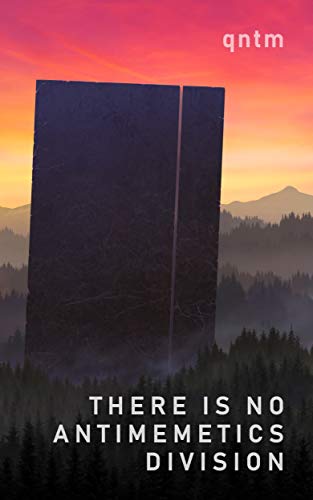


7 ████████████ out of 10.










SECOND HALF OF THE SUMMARY
In the past, Marion returns to a stranger in her house. She attacks the perpetrator who reveals himself to be Adam Wheeler. Her husband of 17 long years. Marion does not believe him. He kisses her, yet it’s a stranger’s kiss. He is given amnestics in order to forget about Marion and allowed to leave. Marion ingests amnestics herself as she reminds herself that her husband is dead.
The narrative shifts perspective as Adam Wheeler takes the form of the main protagonist and narrative perspective. He has found himself as a successful violin player. Halfway through a performance, he notices he is the only one still playing as everyone stares at him. All the people are all fleshy sacks whose skin seems to fold and sag at impossible angles. The “non-people” (as he describes them) begin to take chase before Adam blacks out.
Adam rises in the middle of a hallway. He has no clue how long it has been. He looks out to the sky. The sky looks back.
A phone rings in a nearby room. Adam picks it up. It’s Marion's information ghost. He doesn’t remember her. The woman on the phone is crying, she asks if he remembers her to a surprising no. She sobs louder as she tells Adam to find a man called “Bart Hughes,” the only one who can solve it all.
Twenty years before, Marion Wheeler is waiting at a convention waiting for the man of honour, just before the world ends. It is only her, her supervisor and two other high ranked staff. Bart Hughes enters with a biological eye enhancement, known as a “germ.” They tell him the only solution to fix this endless cycle of destruction is a machine powerful enough to destroy the entity. However it can only be built underground and will take several years. Bart begs not to, however his pleas are cut short by two sharp shots of a pistol. He is killed instantly. Abyssal spiders begin to flood the room as Bart’s germ scurries away.
Back in the present day, Adam searches around the ruins of the site. He finds Bart Hughe’s room and enters it. The door creaks as Adam is presented with a gigantic fleshy leviathan. The beast’s retina pinpricks on his presence as one of its tendrils grasp around his leg. He is hoisted into its maw, as he becomes subsumed in its mass.
The behemoth telepathically introduces himself as Bart Hughes. For the past twenty years he has lived as a germ and been building the machine proposed to save the world. He explains that he has opted to become it himself. Adam questions if it was worth it, Bart implodes his brain.
The menagerie of Adam’s memories flow through Bart’s dimensional mass. Bart explains that he needs the idea of Marion in order to “amplify” the idea of her. She is the antithesis of the entity. Adam remembers her and the two reunite just for a fraction of a minute. Just as quickly, the idea of Marion’s comfort and security are “amplified” as her “ideoform” overtakes that of the original entity.
The novel ends as the supervisor recounts an entire year gap in human consciousness.
REVIEW
As discussed before the entire text is non conforming to a typical narrative, it is non-linear, non-chronological, has different narrators, some of which are untrustworthy. The novel is set from a third person perspective in a fantasy setting where antimemetics are a natural part of life. However the information presented by the narrator knows as much as the characters themselves. Besides a few exceptions, the first half of the book is from Marion’s perspective and the latter in Adam’s. Sometimes information or walls of text will be redacted in their entirety. This added to the book representing a form of how the “antimemetics” work. They suppress information so much that they can make information itself stop existing. To further complicate things, the text reads far closer to an anthology about a concentrated story. Some chapters are just loose scientific documents about memory or forgetting whilst others are set twenty years in the past. This pacing works with the overall theme of the books about mortality and memory.
The text as a whole developed with a slow burn but it was mostly enjoyable. Again, chapters are loosely orchestrated together by common themes whilst also keeping a central plot. It was interesting to read a chapter and attempt to decipher what chapter came before or after it. In this way, the structure itself was one of the most unique of any book I’ve ever read. If it weren’t for the complicated ending compromised by the science fiction elements it would have been far better. Overall, this text pushes the boundaries not only because of its capricious narrative but also because of its use of memory loss as an effective stylistic device.
I picked up this book due to the original source material its derived from which I already thorougly enjoy. There Is No Antimemetic Division is similar however bold enough with its idiosyncratic storytelling conventions that it allows itself to standout without needing to know the original narrative. Through this it pleasantly surprised me, it was nothing like I was expecting at all. The romantic subplot between Adam and Marion in the second half of the book was well executed in a way that didn't diminish from the original science fiction tropes established in the first half. Both the characters complement each other in such a satisfying way that its surprising that Adam didn't appear from the start.
My personal favourite character is Marion. So much of her character can be found due to what she doesn’t say or do rather than what she actually does. She goes through so much in the entire text yet has to stay completely professional through it all. Although it is heavily implied that Marion forgot Adam by accident, it is far more likely through her own narration that she remembered Adam however only said that she forgot him in order to keep him safe from the impending doom. Throughout the entire text, she takes sacrifices again and again in order to keep those she loves safe. It is unknown if she has ever had to blow up that “antimemetic nuke” before or how many times she has had to document herself in the past about the entity. Marion represents the brilliance in Hughe’s writing as we know far more about her based on her stalwart commitments even in the face of the unknown. Her occupation forces her to be cold, methodic and calculating. However she always remains with a heart even through adversity.
My least favourite character was Bart Hughes. His sacrifice for his work was interesting however his addition seems added in the last second. He is completely one dimensional. He serves more as a plot device, something taken literally in the ending, in order for the book to have a good ending rather than an actual character. My least favourite chapter was the ending. That in particular suffered from culminating all of the issues of the scientific jargon whilst managing to achieve a somewhat satisfying ending. Especially “...outbound to the deepest limit of ideatic space…” “The Foundation/Wheeler/protection abstract…” “the memetic equivalent of fluid dynamic equations…” Hughe’s intention to not explain things works against his favour at the exact chapter when it needs to.
My favourite part of the whole text was when Marion first meets the entity. The sheer magnitude behind its inclusion only to be subtly there the whole time was masterfully written. Hidden in plain sight, the perfect camouflage. It is a perfect example of imagery done right. “But the diagram was already there. It’s plastered across the wall in the background of the video, plain as day.” Below is an attempt at a recreation, click and hold on the images in order to drag them out of the way. Move the files to the left whilst moving the pieces to the right until you compile the full image.


There is not one character in this book that does not sacrifice themselves to for something bigger than themselves. Marion sacrifices the love of her life and herself in order to reach a conclusion that she herself may not see. Bart sacrifices his own mental wellbeing and decides to self-modify his body in order to see a reality where the “idea amplifier” is built. Adam ingests the mnestics that kill him, if it means seeing Marion again. All of these promises at the end of the world demonstrate the character's strengths and clarity of mind in a society which is irrevocably broken. Through this, Sam Hughes questions the meaning of a “meaningful death.” Whilst several characters die in the wake of the apocalypse, it is only those in the text that come to terms with their own death/prolonged life who die with purpose. Hughes denotes that those who face their own mortality are those who are truly remembered. Whilst at the end of the book the characters aren’t remembered by those they sworn to protect, they all died for something they believed in. You don’t need to have a meaningful death to be remembered. Hughes portrays this pretence perfectly.